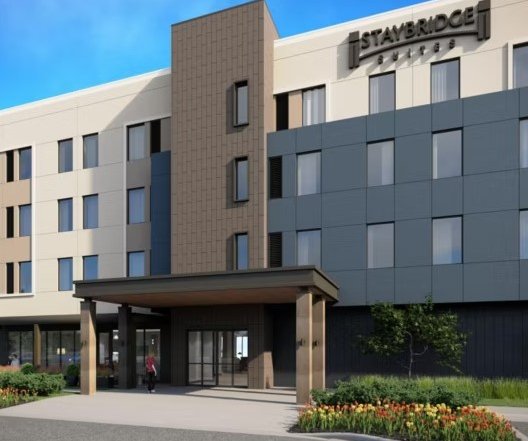Manteca Unified is literally rolling out an initiative that will allow classroom air to recirculate triple what the Centers for Disease Control standards consider optimum to scrub air of COVID-19 droplets.
The $2.8 million endeavor will place the portable units that resemble a small refrigerator on wheels into all of the district’s 1,400 plus classrooms within 10 days.
It is on top of an ongoing effort to upgrade HVACs throughout the district to make sure they are equipped with cutting edge HEPA (high efficiency particulate air) filters aimed at cleansing air of particularly harmful particles.
“We cannot stress enough that our absolutely No. 1 concern is to make the classrooms as safe as possible for student safety and staff safety,” noted Manteca Unified Community Outreach Director Victoria Brunn on Tuesday.
The first units are being placed in classrooms this week.
The decision to go with the portable Carrtier OptiClean units that were designed for medical grade use was driven by a desire to build redundancy into the district’s COVID-19 safety protocols.
“(The district) also wanted to do something immediately,” Brunn said.
The purchase of the units sends the district’s investment in equipment and related-items to make its 33 campuses as safe as possible past the $20 million mark.
The units are designed for rapid deployment. They plug into a standard wall outlet and take up about three square feet of floor space.
Health experts call for optimum conditions to minimize the risk of COVID-19 being spread in a typical 900-square-foot classroom that involve air being recirculated twice in an hour. The Carrier OptiClean units will be set to recirculate air six times per hour using HEPA filters that capture particles as small as .03 microns.
Large droplets fall but smaller respiratory droplets can remain airborne for 30 plus minutes before they are dispatched via ventilation or captured by an air purification system.
The $2.8 million investment will be used to combat other concerns as well after the pandemic recedes.
Units will help clean smoky
air, reduce flu, cold exposure
Obvious applications are during flu and cold season. That is when absenteeism is at the high point due to how those two respiratory ailments spread easily. They also help lessen allergy issues.
But they also will be critical to help make classroom air stay as clean as possible on days of heavy smoke caused by wildfires and during heavy smog events.
Unlike a number of nearby districts that elected to close campuses when Central Valley air quality conditions significantly deteriorated during wildfires, Manteca Unified kept campuses open. That was due to two realties the community is dealing with — a high concentration of households where both parents are working and are also fairly long-distance commuters as well as the fact a large number of students depend on school lunches and even breakfasts or else they would have nothing to eat or items in their home of minimum nutritional value.
Given the air scrubbing units are portable, during such times they could be placed in multi-purpose rooms and such to clean the air to allow normal activities to take place.
Infected people when they breathe, cough, or talk release COVID-19 particles.
Manteca Unified also
upgrading HVACs
The district is taking a holistic approach to the deployment of portable air cleansing units and its endeavor now underway to make sure every of the 2,600 HVAC units in the district are effective in reducing the potential for COVID-19 transmission.
The district’s $1 million indoor air quality program launched in mid-November started with a study to evaluate the existing units that vary in age and design. The study will determine on a unit-by-unit basis which HVACs may just need new filters, if a unit needs to be retrofitted, or it is impossible to retrofit and needs to be replaced.
HEPA filters that pass muster with federal standards remove 99.7 percent of the particles in the air they filter.
Experts such as Joseph Allen who serves as director of the Healthy Buildings program at the Harvard T.H. Chan School of Public Health note that in an average home it takes between two and three hours for an HVAC system to exchange air. The proper air purification system can kick that up to six times in an hour.
It is critical that the room size, ventilation system, and ceiling height of the space each HVAC is cooling or heating be calculated to determine the right sized air purification system.
The $1 million cost will be covered by $24.3 million the state has allocated to the district to address COVID-19 related expenses. The district at the start of January has already spent $20 million of the allocation on things ranging from face masks and partitions to additional equipment needed for distance learning and in-person learning with social distancing protocols as well as training for teachers doing online instruction and endeavors designed to make up for learning loss.
The air quality program will be funded from part of the $4.6 million for COVID-19 related expenses the district hasn’t spent. The state just recently authorized distributing an additional $2 billion to public schools to step up COVOID safety measures.
Superintendent Clark Burke noted the indoor air quality program will be coordinated with health and safety work being funded by voter approved school bond projects. That means if a bond-related project involves HVAC units targeted for replacement for being past their rated life, not being energy efficient and/or proving too costly to maintain that can’t be retrofitted the cost to replace them will be from COVID-19 funds.
That would free up bond funds to help reduce — even if it is in a small way — some of the $42.4 million identified maintenance needs for aging facilities that passage in November of the $260 million Measure A bond won’t address due to insufficient funds.
To contact Dennis Wyatt, email dwyatt@mantecabulletin.com






